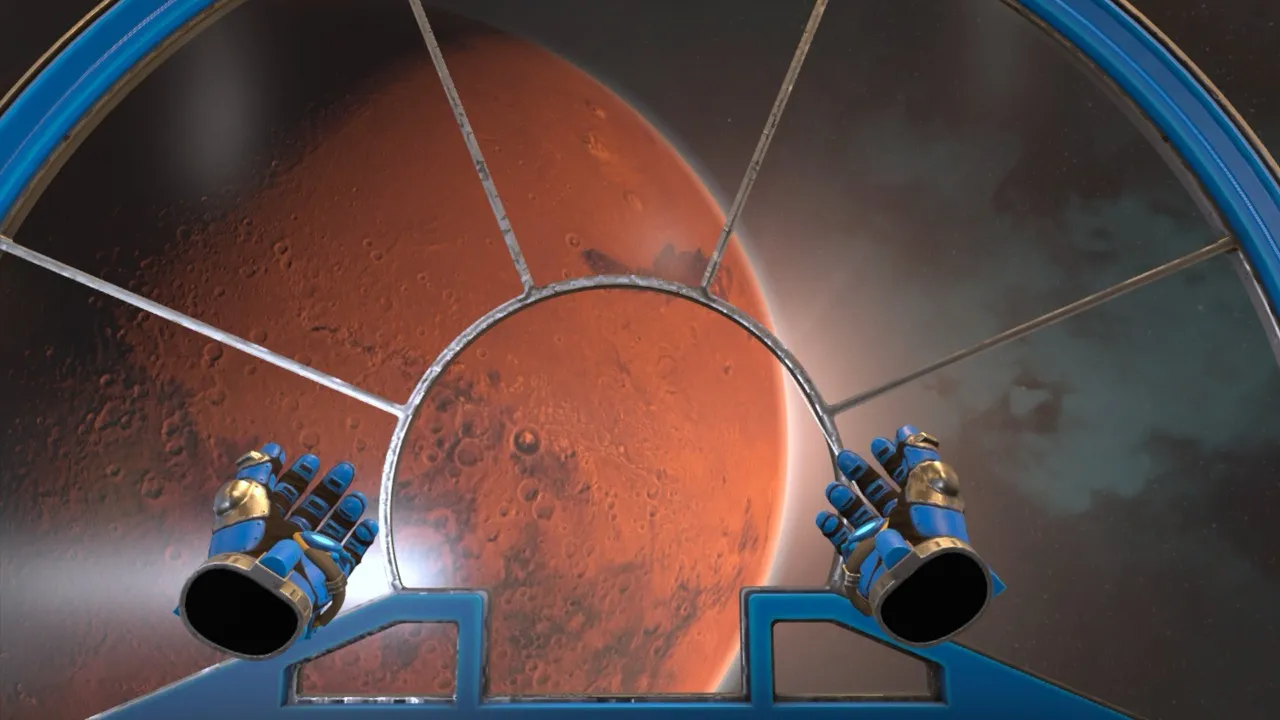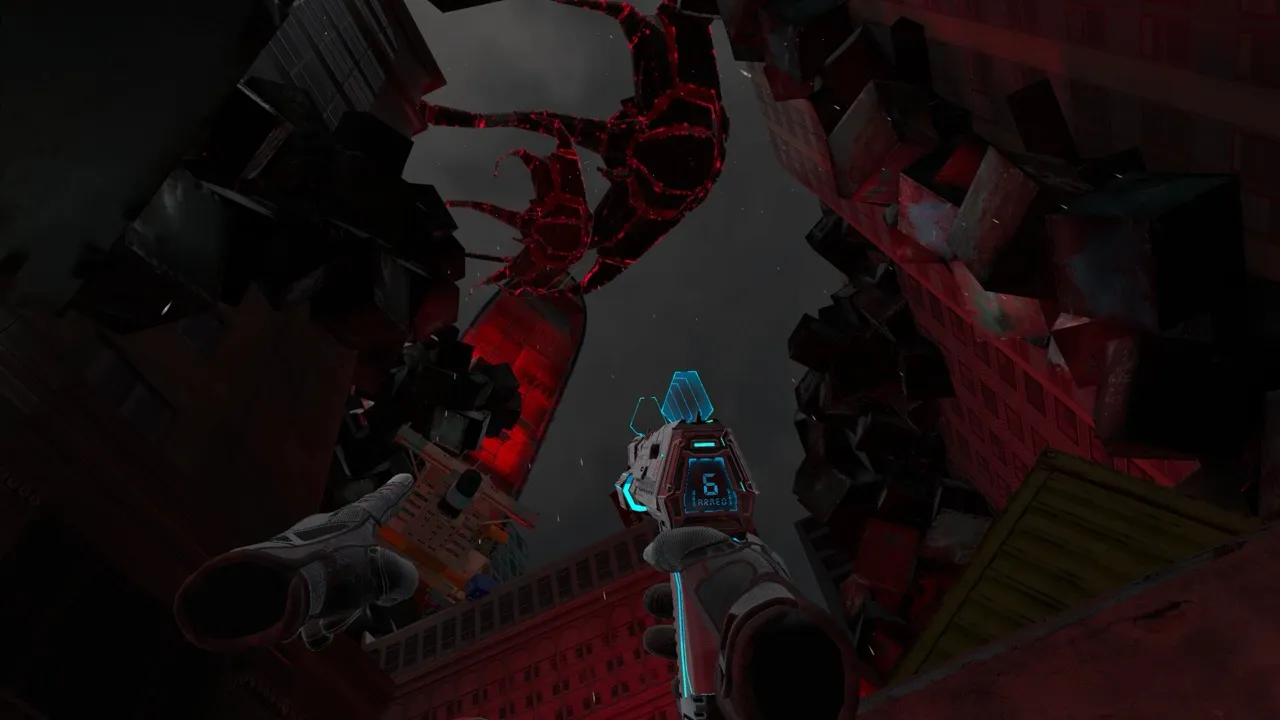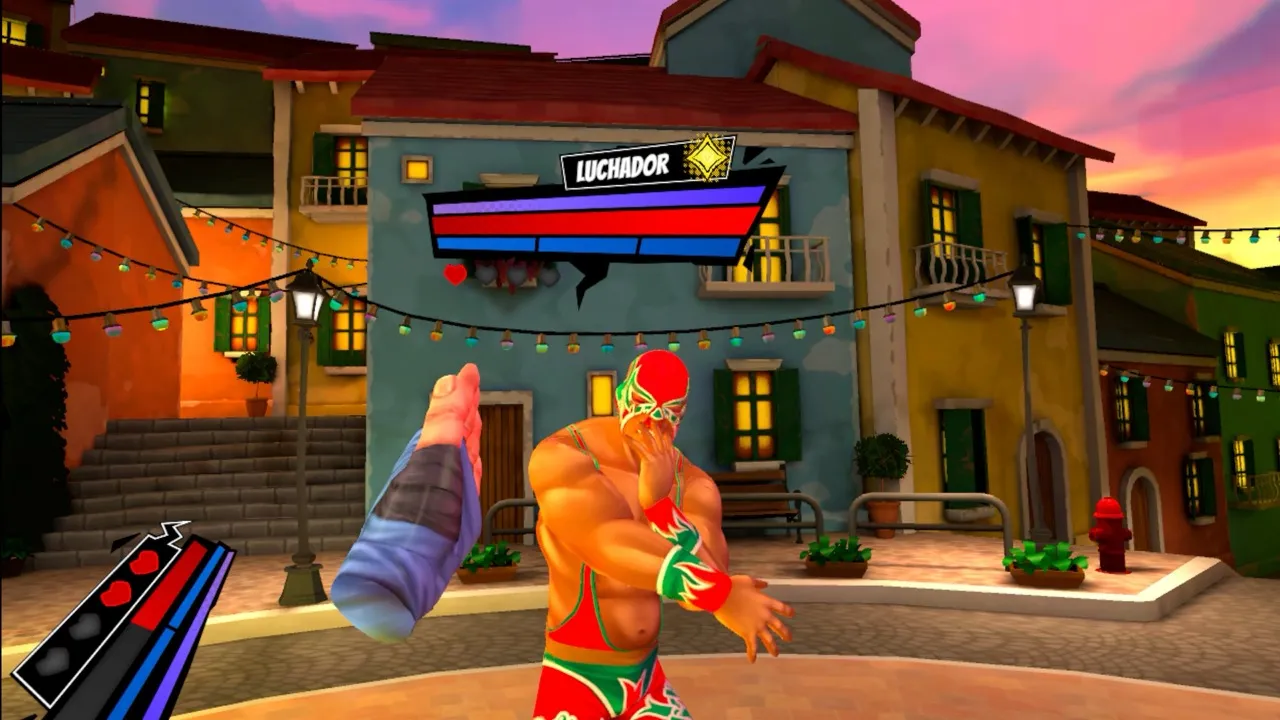Surviving Mars: Pioneer is a slightly flawed but absolutely brilliant survival builder that captures the magic of exploring and colonizing Mars
Colonizing Mars has always been one of those dreams that feels just close enough to imagine but far enough to never really grasp. With Surviving Mars: Pioneer on Quest 3, that dream suddenly feels tangible. This is not just another VR game that drops you into a hostile world and asks you to survive. This is an obsessive loop of gathering, refining, crafting, and expanding, all wrapped in a highly immersive experience that makes you feel like you really are humanity's first pioneer on the Red Planet. And honestly, I am absolutely in love with it.
The story in Surviving Mars: Pioneer is more of a guiding hand than a central narrative. You are one of the first to set foot on Mars, tasked with surviving in this barren, alien landscape and eventually building the foundation for a thriving colony. The game does sprinkle in narrative beats that send you exploring ancient abandoned settlements, derelict bases, and mysterious sites scattered across the planet. These moments push you to expand beyond your comfort zone, nudging you toward places you might have otherwise ignored.
But really, the story exists to create curiosity and to give you an excuse to wander into new territory. Mars itself is the real star here. The red deserts, towering cliffs, and open skies have a lonely but beautiful charm, and when you float across them with your jetpack, it feels both liberating and eerie. That sense of solitude and discovery captures the spirit of exploration perfectly.
Watch this TikTok video
At its heart, Surviving Mars: Pioneer is a city builder mixed with a survival grind, and it nails both. The game runs on a simple but deeply satisfying loop: collect resources, refine them, craft machines, and use those machines to build even bigger and better structures. Every new upgrade feels like a step forward in the grand project of taming Mars.
You start small, scraping together the basics with just a jetpack. Mining raw materials, scavenging old bases, and collecting whatever scraps you can find is your first job. Once you bring those back, you can refine them into usable components, which then unlock the ability to craft advanced machines and materials. Those advanced machines help you build the infrastructure you need for a functioning colony. Basically, you need to science the shit out of it.
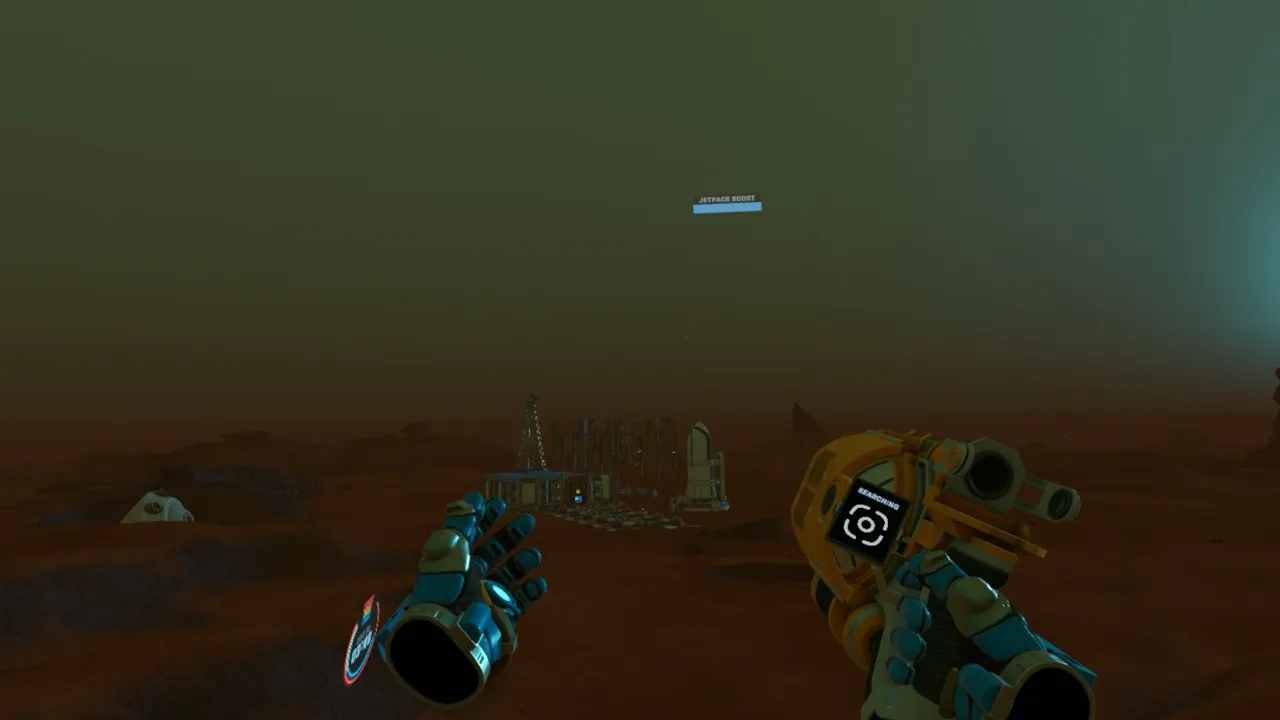
What makes this loop so addictive is its checklist-like nature. Every action feeds into the next, and checking things off, step by step, triggers a little rush each time. You need iron, so you extract it. You need to refine it, so you build a machine. You need more power, so you set up solar panels and windmills. Slowly, you watch your once-barren camp turn into a bustling hub of activity. It scratches that same itch as other resource-management games but with the added thrill of being physically present in VR.
Managing oxygen and nutrition adds a layer of survival tension early on. At first, it feels like you're always on the brink of suffocation or starvation, juggling tanks and food packs just to keep going. But once you've upgraded your suit and stockpiled enough supplies, those systems fade into the background, letting you focus on the bigger picture of expansion. The relief of finally not worrying about every breath you take is immensely rewarding.
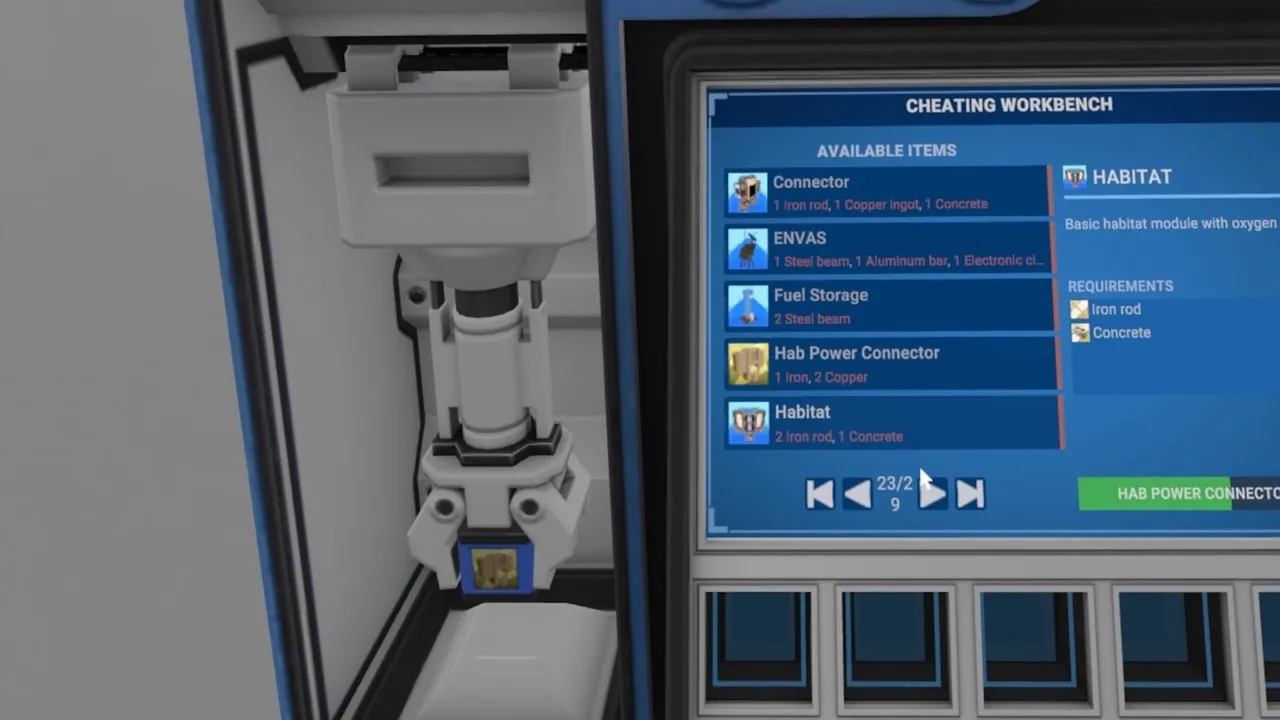
The control scheme takes a little getting used to. It is not your typical VR setup, and at first, I found myself fumbling around, confused about how to interact with certain systems. After some time, though, it clicked. Once you understand how the jetpack works, how the rover controls, and how mining tools are deployed, movement and interaction feel smooth. Floating across a canyon or zipping around your base becomes second nature, and that freedom of movement is one of the game's highlights.
Inventory management, however, is another story. This system is easily the most frustrating part of the game. Moving items between your bag and storage feels unnecessarily clunky. You either move things one by one, which is painfully slow, or dump everything at once, which is messy and unorganized. There is no option to select multiple items at once, no way to assign resource types to specific storage units, and worst of all, no real way to discard items you don't want.
At the moment, the only “discard” system is to dump things into random boxes you find in the world, which makes no sense considering how tight your starting inventory space is. With how much time you'll spend managing resources, this system ends up being more annoying than immersive. Hopefully, this is something the developers improve in future updates, because it's the only real sore spot in an otherwise well-designed experience.
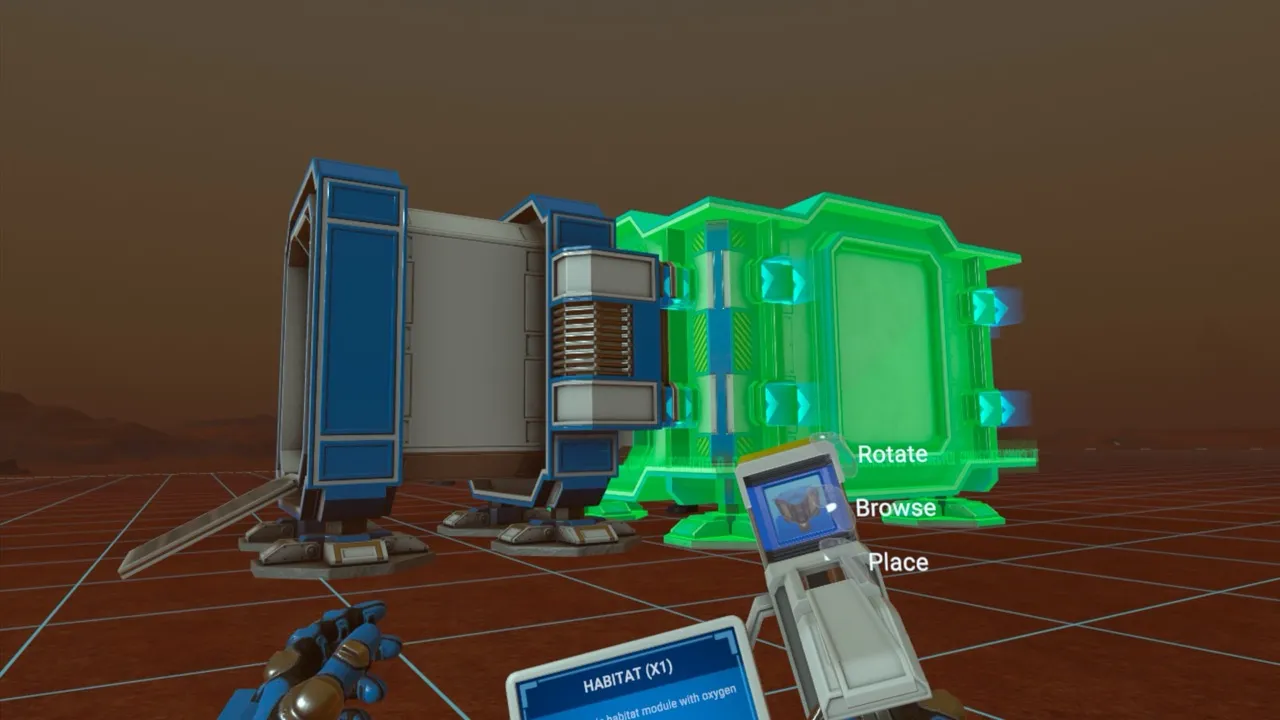
Make no mistake, Surviving Mars: Pioneer is a grind. You will be mining, refining, and crafting over and over again, and if you're not into resource-heavy games, it might feel repetitive. But if, like me, you enjoy that rhythm of steady progress, it becomes a constant dopamine hit. Every new piece of infrastructure feels earned. Every successful exploration mission adds to the sense of accomplishment.
The grind is not there to punish you but to give weight to your progress. When you finally step back and look at the colony you've built, the hours of collecting and building feel worth it. Mars slowly transforms from a hostile wasteland into a home, and you are the reason why.
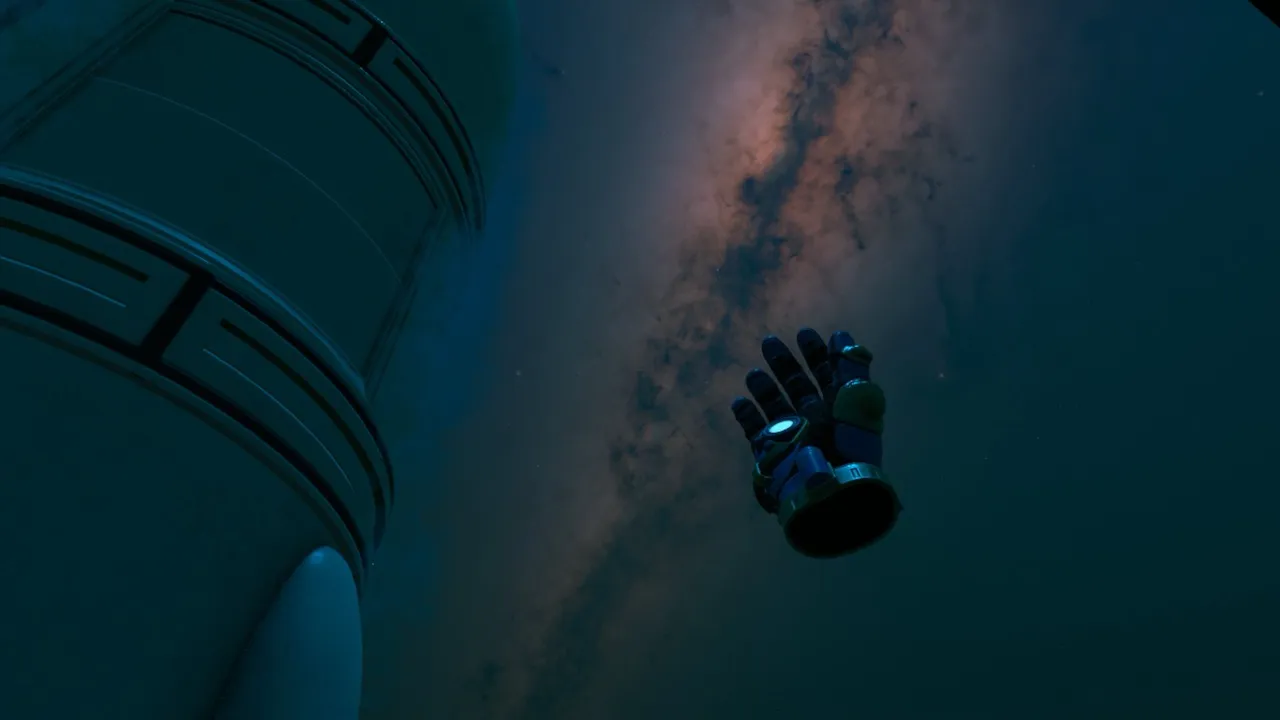
Surviving Mars: Pioneer looks fantastic on the Quest 3. The Martian landscapes are rendered with enough detail to feel alien yet believable. The way the red dust kicks up during storms, the shine of metallic structures under the sun, and the eerie emptiness of abandoned outposts all come together to create a world that feels alive, even though it's technically barren.
Performance is another win. The game runs buttery smooth on the Quest 3, with no stuttering or hiccups even during long sessions. This is important because the game encourages you to play for hours at a time. It's not the type of VR experience where you pop in for ten minutes and pop out. It's a game that pulls you in for entire evenings, where you suddenly realize you've been playing for three hours while lying on your couch, completely lost in the loop.
And yes, this is one of those rare VR games that works perfectly well slouched on a couch. The control scheme makes it comfortable to play seated, which is not something you can say for many modern VR titles. The combination of relaxed play and addictive progression makes it dangerously easy to lose track of time.
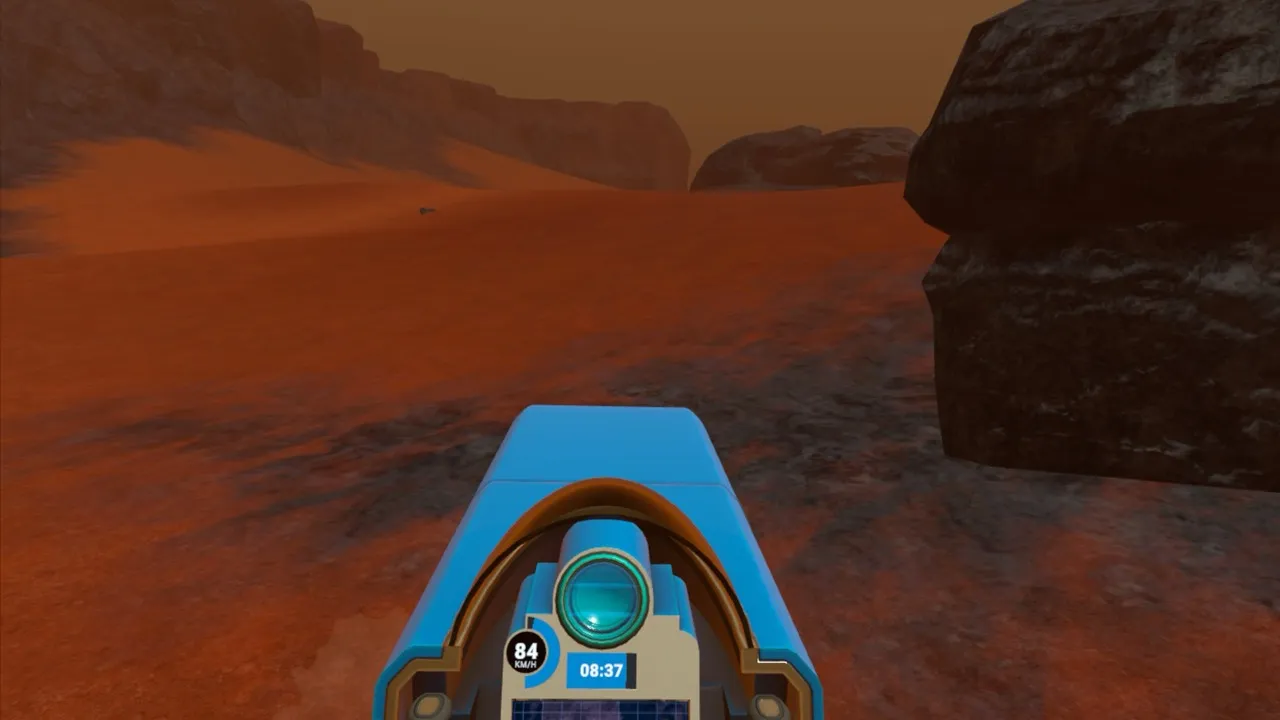
Surviving Mars: Pioneer is one of the most addictive VR games I have played on Quest 3. It combines the satisfaction of a city builder, the challenge of survival mechanics, and the immersion of VR into one package that is hard to put down. Sure, the inventory system is clunky, and the early hours can feel punishing, but once you push past those hurdles, it becomes an incredibly rewarding experience.
The sense of exploration, the joy of watching your base grow piece by piece, and the thrill of surviving and thriving on Mars make this game special. It looks great, runs flawlessly, and offers hours upon hours of gameplay. I was hesitant at first, but after sinking countless hours into it, I can confidently say this is an essential purchase for anyone with a Quest 3 who is into city builders or survival games. Thanks for reading!
The game was reviewed on a Quest 3 via a promo copy provided by the developer. Surviving Mars: Pioneer is available on Meta Quest, PCVR and PSVR2.
